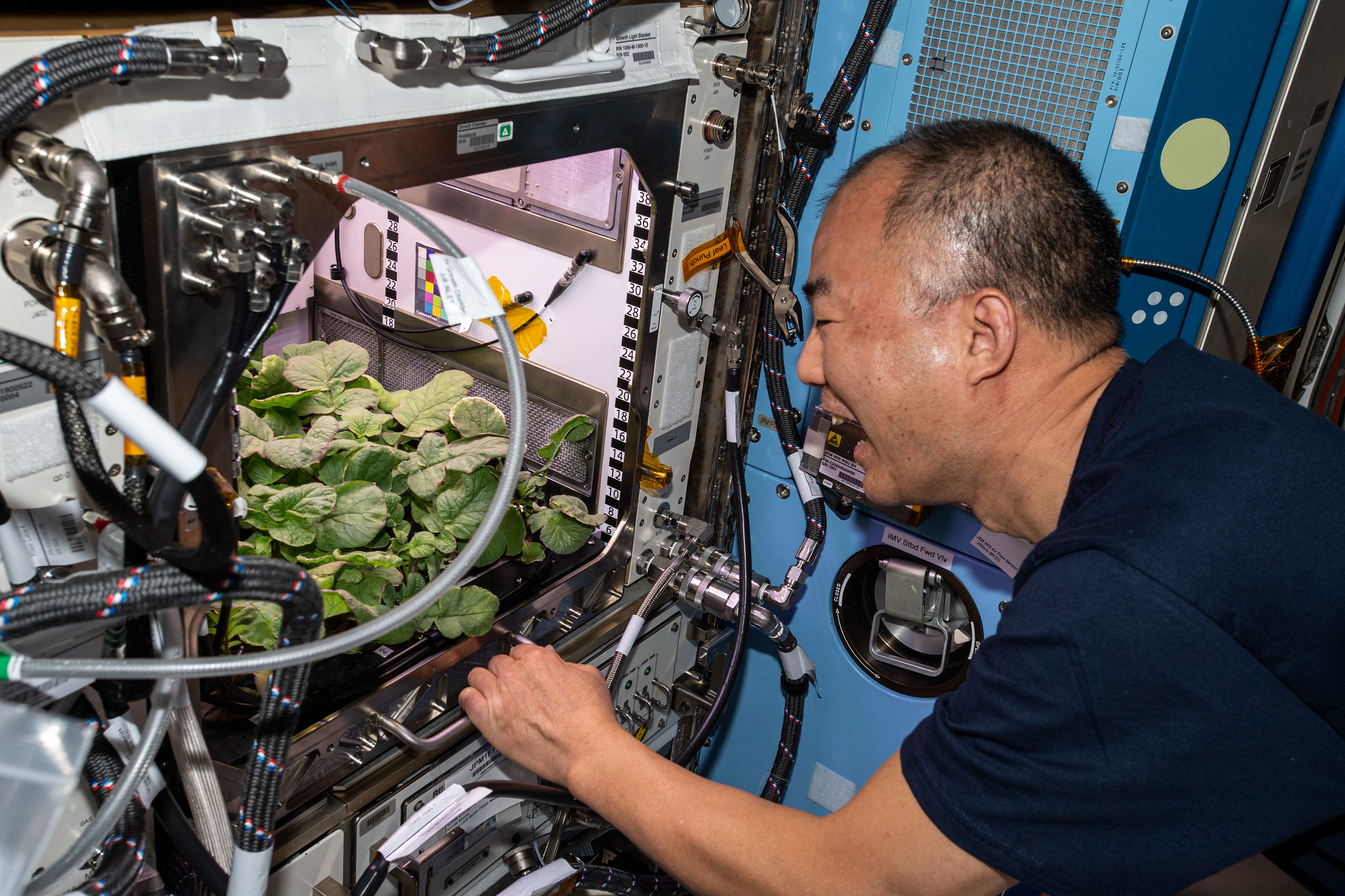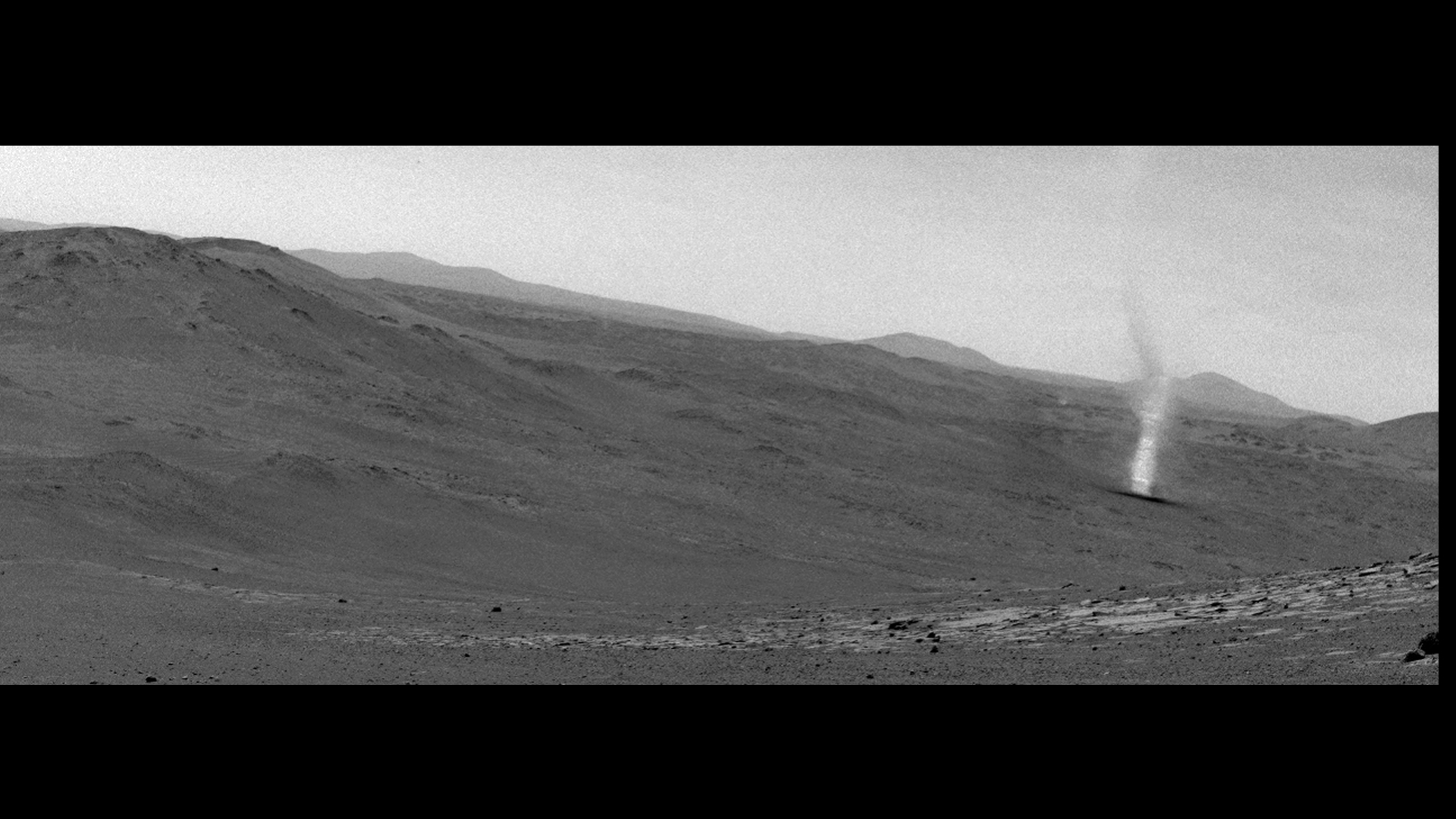NASA astronaut Kate Rubins harvests radishes grown in space
NASA astronaut Kate Rubins harvested fresh radishes grown in space, opening new doors for producing food in microgravity to sustain future longer-term missions to the moon and Mars.
The radishes were grown in the Advanced Plant Habitat (APH) aboard the International Space Station. NASA shared a time-lapse video of the radishes as they grew inside the APH over the course of 27 days.
On Nov. 30, Rubins harvested 20 radish plants from the APH, wrapping each in foil and placing it in cold storage. The radish plants will be sent down to Earth early next year on SpaceX's 22nd Commercial Resupply Services mission, according to a statement from NASA.
Related: Astronauts harvest 3 different crops and try new gardening tech
Radishes are the latest type of fresh produce to be successfully grown and harvested in microgravity, and were chosen for the Plant Habitat-02 (PH-02) experiment because the vegetable is well understood by scientists and reaches maturity in just 27 days.
Radishes are also a viable test plant for future longer-term missions because they are edible and nutritious. The vegetable is genetically similar to Arabidopsis, which is a small flowering plant related to cabbage that has been studied frequently in microgravity, according to the NASA statement.
"Radishes are a different kind of crop compared to leafy greens that astronauts previously grew on the space station, or dwarf wheat, which was the first crop grown in the APH," Nicole Dufour, NASA APH program manager at Kennedy Space Center, said in the statement. "Growing a range of crops helps us determine which plants thrive in microgravity and offer the best variety and nutritional balance for astronauts on long-duration missions."
Breaking space news, the latest updates on rocket launches, skywatching events and more!
The PH-02 experiment allowed NASA scientists to study the ideal balance of care and feeding when growing quality plants in space. The radishes were grown using a precise quantity of minerals and required very little maintenance from the crew. The APH chamber uses red, blue, green and broad-spectrum white LED lights to stimulate plant growth, while a sophisticated control system delivers water to the plants as needed.
The APH is also equipped with more than 180 sensors that allow researchers at NASA's Kennedy Space Center to monitor plant growth and regulate the temperature, moisture and carbon-dioxide levels inside the chamber, according to the statement.
"Radishes provide great research possibilities by virtue of their sensitive bulb formation," Karl Hasenstein, principal investigator for PH-02 and a professor at the University of Louisiana at Lafayette, said in the statement. Hasenstein has conducted plant experiments with NASA since 1995.
In addition to the crop grown in space, researchers have been growing radishes in the control plant habitat in the International Space Station Environmental Simulator (ISSES) chamber at Kennedy Space Station Processing Facility since Nov. 17. The ISSES radishes were harvested on Dec. 14 to be compared with those grown in space.
NASA astronauts will plant another round of radish seeds in the second science carrier of the APH fairly soon, allowing scientists to increase the sample size of radishes grown in space to enhance the accuracy of the experience, officials said in the NASA statement.
"It's a privilege to help lead a team that is paving the way to the future of space crop production for NASA's exploration efforts," Dufour said in the statement. "I've worked on APH since the beginning, and each new crop that we're able to grow brings me great joy because what we learn from them will help NASA send astronauts to Mars and bring them back safely."
Follow Samantha Mathewson @Sam_Ashley13. Follow us on Twitter @Spacedotcom and on Facebook.

Samantha Mathewson joined Space.com as an intern in the summer of 2016. She received a B.A. in Journalism and Environmental Science at the University of New Haven, in Connecticut. Previously, her work has been published in Nature World News. When not writing or reading about science, Samantha enjoys traveling to new places and taking photos! You can follow her on Twitter @Sam_Ashley13.


